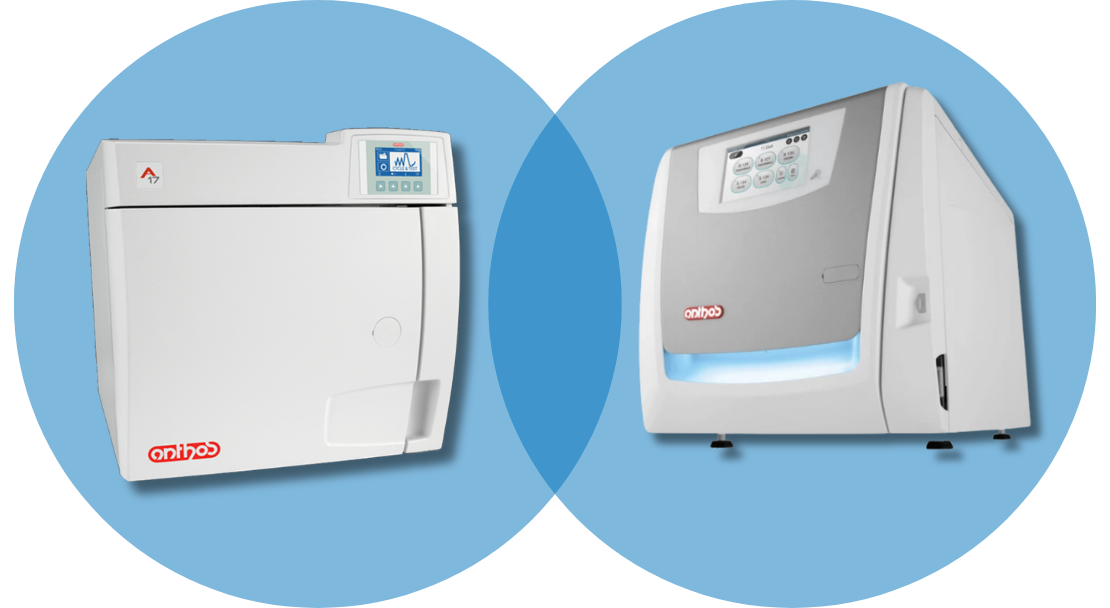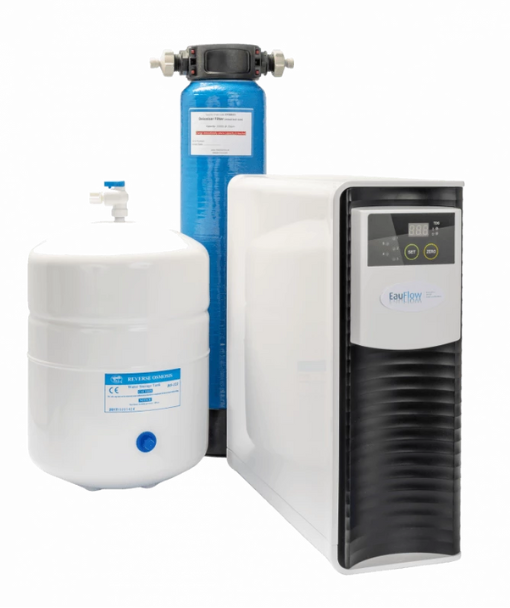
For the safety of staff and patients alike, every dental practice must maintain impeccable sterilisation standards. Because of this, the efficacy and reliability of sterilisation equipment is key to how well your dental practice runs.
There is no shortage of autoclaves available. While this means that you can find a model which best suits your unique dental practices’ needs, the overabundance of choice can be daunting.
In this article we aim to help you understand the nuances between different autoclave types, so that you can make informed decisions about which autoclave is right for you.
Autoclave: Class 'B' vs. Class 'S'
The choice between Class 'B' and Class 'S' autoclave models is key, as it directly impacts the effectiveness of your sterilisation processes.
Understanding Class 'B' autoclaves: These machines are engineered to meet the stringent sterilisation demands of dental instruments, particularly those with intricate designs or hollow channels. Class 'B' autoclaves utilise a vacuum system to ensure steam penetrates deep into fine lumens, effectively eliminating air bubbles and ensuring thorough sterilisation. This makes them indispensable for sterilising instruments like handpieces, 3-in-1 syringe tips, and surgical cassettes.
Understanding Class 'S' autoclaves: Designed for specific applications and characterised by their speed, Class 'S' autoclaves offer a rapid sterilisation solution. While they may not possess the vacuum capabilities of Class 'B' models, they excel in swift sterilisation cycles, making them ideal for specific instruments that require immediate use.
It's important to note that while Class 'B' autoclaves can accommodate Class 'S' cycles, the reverse isn't true, as Class 'S' autoclaves lack vacuum pumps. However, a Class ‘S’ autoclave will be specifically designed to clean a certain, manufacturer specified, instrument, offering sterilisation for a specific purpose or instrument range.
.webp) Autoclave size considerations
Autoclave size considerations
The size of your autoclave plays a significant role in optimising efficiency, energy consumption, and workflow. If possible, you want to avoid a build-up of equipment having to wait for the autoclave, or constantly using half-filled chambers. It is a balancing act between maximum efficiency and lowering your carbon footprint.
Volume matters: In the UK, where autoclaves often run continuously throughout the day, selecting the appropriate chamber size is crucial. The standard choice for many practices is a 17-litre autoclave. Its compact chamber size not only conserves space but also minimises water consumption, contributing to operational efficiency.
Scaling up: In larger practices or those with high patient volumes, opting for a larger autoclave may be warranted. However, rather than investing in a single large autoclave, some practices prefer the flexibility of deploying two 17L autoclaves. This redundancy not only ensures uninterrupted sterilisation capabilities but also allows for one unit to serve as a backup in the event of maintenance or downtime. If one autoclave is preferred, most manufacturers offer 22 or even 28 litre options.
Models and options: Several autoclave manufacturers offer a range of sizes to accommodate diverse practice needs. Examples include the Anthos A and A Platinum ranges, which come with a choice of 17L, 22L, or 28L. The same applies to W&H, which, in addition to their 17 litre models, offer the Lara XL, boasting a 28L capacity. On the other end of the spectrum there is the Dentsply Sirona DAC Universal S that has been designed to solely wash, lubricate and sterilise up to 6 handpieces at a time.
Ultimately, the decision about the right autoclave size for you should align with the unique operational requirements and spatial constraints of your practice.
Speed of sterilisation
- The need for speed: While assessing the speed of a unit, ensure you are considering the entire cycle time, encompassing sterilisation, drying, and cooling phases. Rapid sterilisation cycles, typically offered by Class 'S' autoclaves, can boast cycle times of under 20 minutes, allowing for the swift sterilisation of critical instruments at a moment's notice.
- Balancing act: Speed must be balanced with other factors such as thoroughness, size, and instrument compatibility.
- Selecting the right cycle: Dental practices must evaluate their specific sterilisation needs and select autoclaves with cycle options that align with those requirements.
- A comprehensive approach: Ultimately, while speed is valuable, it's essential to approach sterilisation holistically. By considering the entire cycle time and balancing speed with thoroughness, dental practices can optimise sterilisation processes to deliver exceptional patient care efficiently and effectively.
 Water source: R/O water vs. tap water
Water source: R/O water vs. tap water
Water quality is a critical consideration in the operation of autoclaves, as it directly impacts the efficacy and longevity of sterilisation processes. Understanding the differences between Reverse Osmosis (R/O) water and tap water will help you choose the best autoclave for your practice.
Purity matters: Autoclaves require water with a high level of purity to operate effectively. Distilled or Reverse Osmosis (R/O) water, devoid of impurities or mineral deposits, is the preferred choice for sterilisation processes. R/O water undergoes rigorous filtration processes, ensuring it meets the stringent purity standards necessary for sterilisation.
R/O water systems
Investing in a Reverse Osmosis Unit, such as the CleanCert EauFlow or MELAG MELAdem 47, provides a practical solution for obtaining purified water within your practice.
These systems are connected to the mains water supply and utilise a series of filters to remove impurities as water passes through the filtration system. Some R/O systems offer direct connections to autoclaves, streamlining the sterilisation process and ensuring a constant supply of purified water while others have a tap for filling bottles and jugs.
Other things to consider
Tap water alternatives: Some autoclaves are equipped with built-in water filtration systems that allow the use of tap water. Units like the Anthos A17 Platinum feature integrated water filters that purify and recirculate tap water, significantly reducing water consumption and environmental impact. This innovative solution enables multiple sterilisation cycles using a single load of tap water.
Disposal considerations: Post-sterilisation, autoclaves typically discard water into a built-in waste-water tank or directly into the sink syphon through a designated connection. Proper disposal protocols ensure compliance with regulatory standards and environmental best practices.
Data logging and remote diagnosis: In the digital age, data logging and remote diagnosis features have emerged as indispensable tools, empowering dental professionals to monitor and manage autoclave performance with ease.
Tracking sterilisation cycles: Data logging capabilities allow dental practices to track and record sterilisation cycles in real-time. Autoclaves equipped with built-in data loggers provide comprehensive insights into sterilisation protocols. This data can be downloaded onto a USB stick for documentation purposes or integrated into the practice's local network for centralised storage and analysis.
Instantaneous diagnosis: In the event of an error or technical issue, remote diagnosis features enable swift identification and resolution of problems. Autoclaves like the Anthos EasyCheck system provide real-time diagnostics, allowing dental professionals to address issues, such as warning or error messages, promptly and minimise downtime.
Whether it's a simple notification or a critical error code, remote diagnosis capabilities ensure that practices can maintain uninterrupted sterilisation processes without the need for onsite service calls.
Usage reports and analytics: Beyond troubleshooting, data logging features offer valuable usage reports and analytics, enabling practices to optimise sterilisation protocols and resource allocation. By analysing cycle counts, usage patterns, and performance metrics, dental professionals can identify areas for improvement and implement targeted strategies to enhance efficiency.
Streamlining maintenance: Utilising data logging insights, dental practices can proactively schedule maintenance and servicing to ensure optimal autoclave performance. By identifying trends and patterns in usage data, practices can anticipate maintenance needs, minimise equipment downtime, and prolong the lifespan of their autoclaves.

